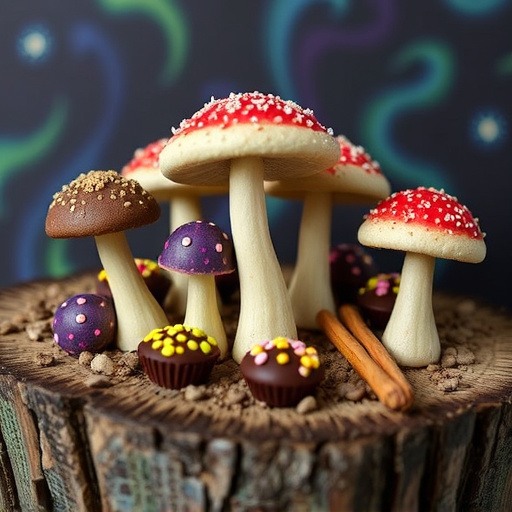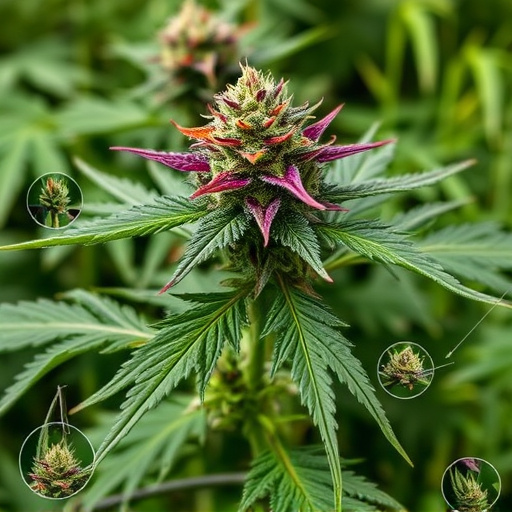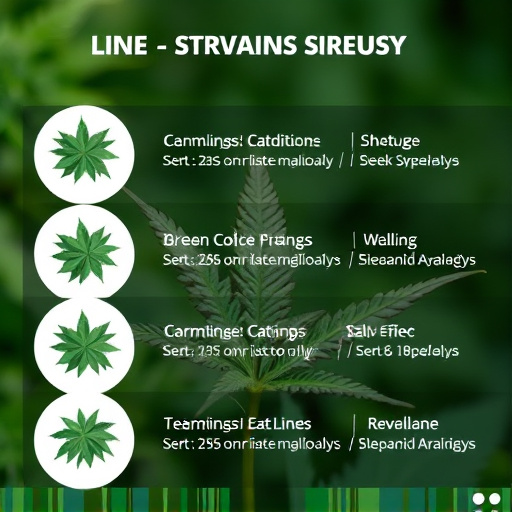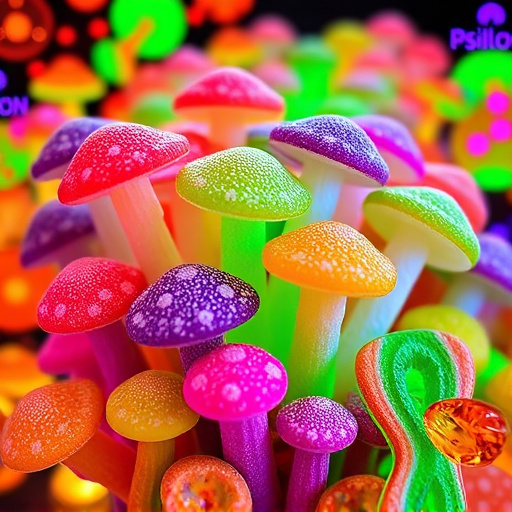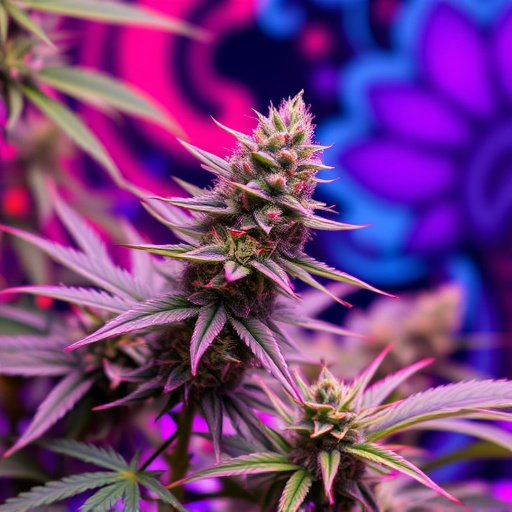The effects of psychedelic cannabis strains vary greatly due to their unique chemical compositions, including THC, CBD, and terpenes like myrcene and limonene, which modulate the high. Individual reactions differ based on physiological factors such as age, weight, gender, health, and THC tolerance, with higher tolerances leading to shorter highs. Environmental conditions like temperature and humidity also impact duration, while consumption methods—edibles vs. smoking/vaping—affect the intensity and longevity of the experience. Psychedelic cannabis strains are particularly influenced by these variables, offering a range of potent effects tailored to user preferences.
The duration of a weed high can vary drastically, with factors influencing its length ranging from genetics to individual physiology and environmental conditions. This article delves into these nuances, focusing on the role of psychedelic cannabis strains, their unique genetic composition, and terpene content. We explore how your body’s THC processing affects the high’s longevity and investigate environmental factors and consumption methods that can extend or shorten the duration of the experience. Understanding these elements can help users optimize their cannabis experiences.
- Genetic Composition and Terpene Content: The Role of Psychedelic Cannabis Strains
- Individual Physiology and Tolerance: How Your Body Processes THC
- Environmental Factors and Consumption Methods: Influences on High Duration
Genetic Composition and Terpene Content: The Role of Psychedelic Cannabis Strains
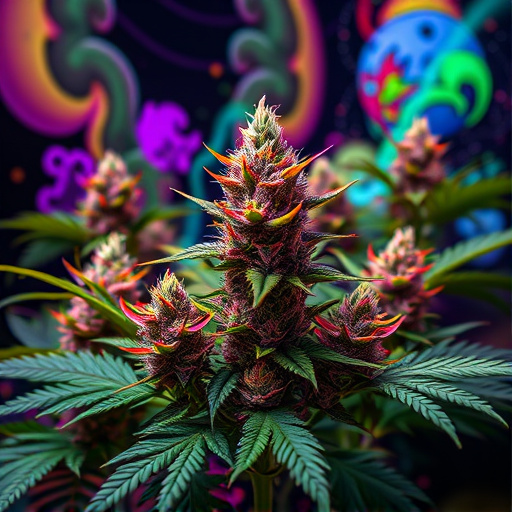
The duration and intensity of a weed high are influenced by various factors, one of which is the genetic composition and terpene content of the psychedelic cannabis strains. Different strains have unique chemical profiles that contribute to their distinct effects on users. Psychedelic strains, in particular, are known for their higher concentrations of cannabinoids like THC (tetrahydrocannabinol) and CBD (cannabidiol), as well as a diverse range of terpenes—organic compounds responsible for the characteristic aromas and flavors of cannabis.
Terpenes play a crucial role in modulating the effects of cannabinoids, enhancing or altering the high experienced by consumers. For instance, myrcene, a common terpene found in many strains, is known to have sedative properties, leading to a more relaxed and tranquil high. Conversely, limonene, with its citrusy scent, may promote feelings of happiness and reduce anxiety. The intricate interplay between these genetic factors creates a complex experience for users, making each psychedelic cannabis strain unique in terms of duration and potency of its high.
Individual Physiology and Tolerance: How Your Body Processes THC
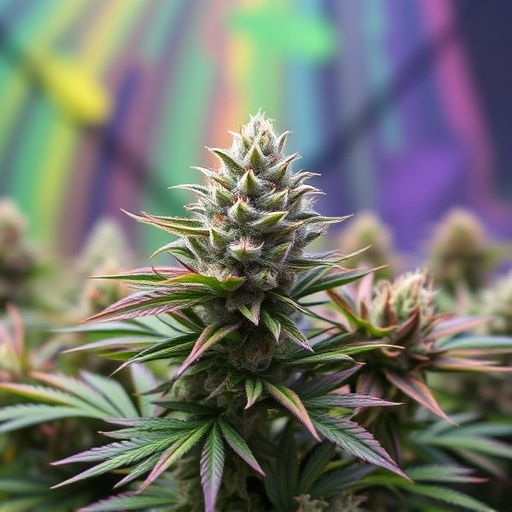
Every individual’s experience with a weed high is unique, and this is largely due to differences in their physiological makeup and tolerance levels. The human body metabolizes cannabis compounds, notably THC (tetrahydrocannabinol), differently from person to person. Factors like age, weight, gender, and overall health influence how quickly and efficiently your body processes THC.
Those with a higher tolerance for THC may experience shorter-lived highs because their bodies are more accustomed to managing the compound’s effects. Conversely, individuals with lower tolerances might feel the effects of cannabis for an extended period due to slower metabolism. This is particularly relevant when considering the impact of psychedelic cannabis strains, known for their heightened THC content, which can intensify and prolong the sensory and cognitive alterations associated with a high.
Environmental Factors and Consumption Methods: Influences on High Duration
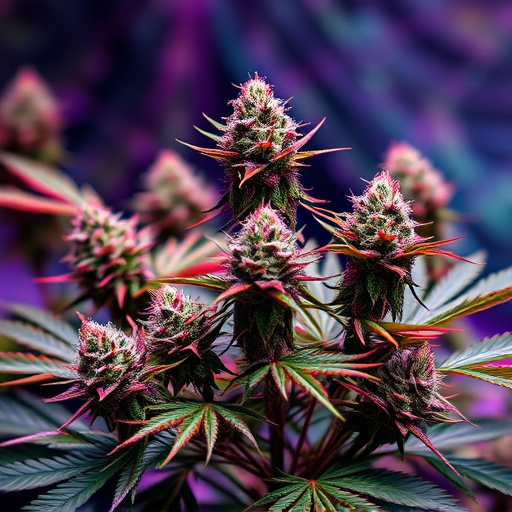
The duration of a weed high can be significantly influenced by environmental factors and consumption methods, especially when it comes to psychedelic cannabis strains known for their potent effects. Environmental elements such as temperature, humidity, and light play a crucial role in how quickly and intensely cannabinoids like THC bind to receptors in the brain. Cooler temperatures and lower humidity levels tend to prolong the high, while warmer environments may accelerate its onset but reduce its longevity.
Consumption methods also have a notable impact. Edibles, for instance, deliver THC through the digestive system, leading to slower absorption and a longer-lasting high that can last up to 12 hours or more. In contrast, smoking or vaping allows immediate access to cannabinoids, resulting in a quicker but shorter-lived high. Moreover, different consumption methods affect the overall experience; for example, vaporizers can deliver a smoother, more controlled high compared to smoking, which may contribute to varying perceived durations.
The duration of a weed high is influenced by a complex interplay of factors, including genetic composition and terpene content in psychedelic cannabis strains, individual physiology and THC tolerance, as well as environmental factors and consumption methods. Understanding these elements can help users predict and optimize their desired level of intoxication. Whether appreciating the enhanced senses of psychedelic strains or seeking a more controlled experience, knowledge is power when it comes to navigating the duration of a weed high.

